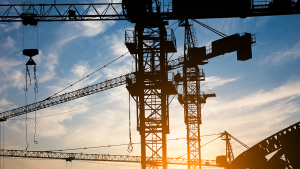EverWind Fuels continues to march towards possible launches of two huge hydrogen energy projects in Atlantic Canada, reaching new milestones seemingly every few weeks.
The total value of the projects is $14 billion. Both the Port Tupper, N.S. facility and its Burin Peninsula, N.L. sister project would require a full wind farm, a plant to develop green hydrogen and a third facility to transform that hydrogen into green ammonia, a liquid.
Port Tupper already has a major port facility to ship the ammonia but the Burin Peninsula site would require additional infrastructure including a satellite port.
Approximately 5,000 construction workers would be required for three years of labour on each site.
The $6-billion Port Tupper project has already received North America’s first environmental assessment approval for a large-scale green hydrogen project and a final investment decision (FID) on the project is imminent, according to Sam Imbeault, an EverWind project consultant.
“It’s just pulling all the pieces together. These projects are incredibly challenging. There has never been a project of this scale in this sector ever done before,” he commented recently.
“We are confident in the projects that we’re building. So far, there’s no reason to think they won’t happen. It’s just a matter of pulling all the pieces together.”
EverWind has invested close to $180 million advancing the projects so far and has signed non-binding purchasing deals with two energy firms in Germany.
Further encouragement came in the April federal budget, with the Liberal government introducing a new 40-per-cent investment tax credit for capital funding of hydrogen. The new Canada Growth Fund also offers incentives to investors.
Imbeault said Germany is the fastest-moving market for green energy products such as hydrogen and ammonia and that drive was accelerated with the war in the Ukraine, which compromised Germany’s gas supply.
On July 6 EverWind received notification from the Government of Newfoundland and Labrador that it has successfully advanced to the final stage of evaluation for the leasing of Crown land to develop its Burin Peninsula project.
“We submitted a giant proposal that our team worked really hard on, and we are proud of it,” said Imbeault.
“I certainly feel confident with what we’ve proposed. We have an incredible project. We’re probably one of, if not the most, experienced developer in this space. We’re focused on a region that’s really supportive.
“We have all the key ingredients to be successful. Now it’s just a bit of wait and see.”
On July 17 EverWind announced the purchase of three other wind farm development projects in Nova Scotia that will also supply power to the Port Tupper project.
EverWind also recently announced the launch of its meteorological (MET) tower program, with six MET towers to be erected on the Burin Peninsula to begin collection of wind data required for project engineering and financing.
Early works have already begun at the Port Tupper project and the campus could be operational as early as the end of 2025.
The best-case scenario for the Burin Peninsula job is a FID within a year and construction starting towards the end of 2024 with commissioning towards the end of 2027. The project still requires de-risking.
Early on, Imbeault said, EverWind began consulting with the two provincial building trade councils, colleges and universities to discuss the need for skilled workers. The firm is also working with Econext, a Newfoundland clean energy agency. He said the skills required are not excessively complex; rather, given there are other hydrogen projects also ramping up, it’s a matter of securing enough workers.
“In both provinces we’ve tried to engage very early with organizations such as Trades NL, for example, and share our thinking and our views on how the projects are unfolding, just to give them the latest and greatest.”
EverWind is working with RES, a renewable energy developer, on the Port Tupper wind farm project and Black & Veatch on the production facilities.
Imbeault said none of the projects are technically difficult in themselves.
Electrolysis, which uses power to split hydrogen out of freshwater, has been around a long time but it was not done at commercial scale until more recently. The ammonia production facility pulls nitrogen out of the air and combines it with hydrogen under pressure to create the chemical reaction that produces ammonia.
“These production facilities exist all over the world and they have been in industrial scale production for decades. Even here in Canada, there are very significant ammonia production plants,” said Imbeault.
The working cost of $14 billion is just for the main project facilities and marine terminals and does not include other infrastructure that would be needed such as accommodations for workers.
EverWind is led by Australian Trent Vichie, co-founder of the firm.
Follow the author on Twitter @DonWall_DCN





Recent Comments
comments for this post are closed